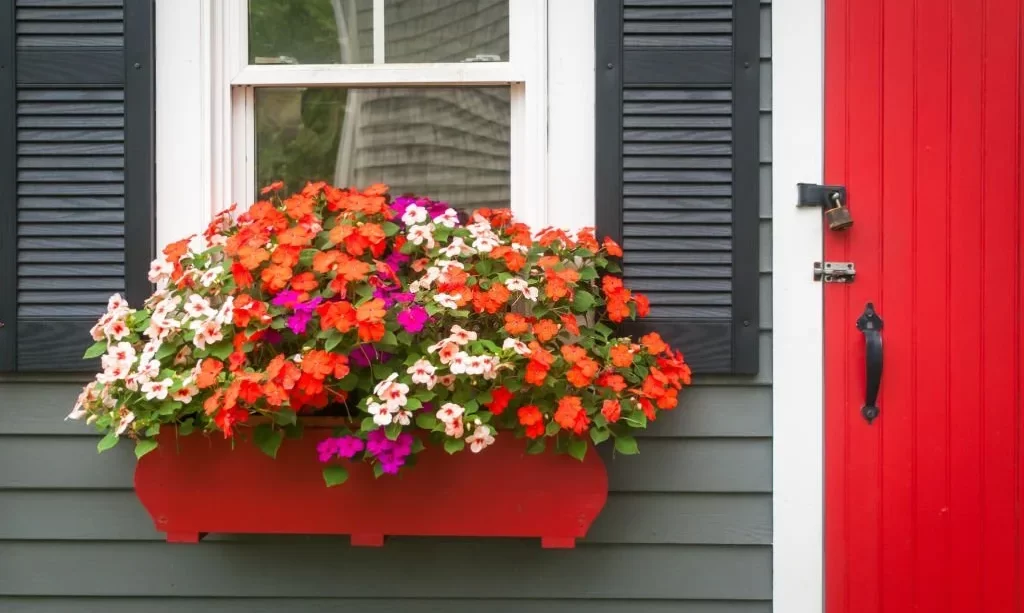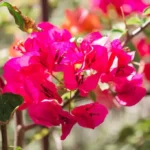In the colorful tapestry of garden blooms, few flowers can match the sheer vibrancy and charm of impatiens. These delightful plants have found a cherished place in the hearts of garden enthusiasts worldwide. However, a common query often lingers among gardeners: Do impatiens have the remarkable ability to return year after year, gracing our gardens with their dazzling presence, or are they ephemeral annuals that demand replanting annually? To unravel this perennial mystery, let’s embark on a journey into the fascinating world of impatiens and uncover the secrets behind their lifecycle.
Unveiling Impatiens
Impatiens, botanical members of the Balsaminaceae family, stand as enchanting representatives of the floral kingdom. These plants boast a distinct charm characterized by their lush green foliage and a profusion of brilliantly hued, trumpet-shaped blossoms. Commonly known by various names such as “busy Lizzies” and “touch-me-nots”, impatiens come in an array of captivating colors, from soft pastels to vivid shades that ignite gardens with vibrant hues.
What sets impatiens apart is their captivating bloom, which often blankets the plant so thoroughly that it conceals the very foliage that cradles it. Their name, “impatiens,” speaks to their unique reproductive strategy, as their seed pods burst open at the slightest touch, catapulting seeds in all directions—a captivating phenomenon for curious onlookers.
As we delve into the intricate world of impatiens, we will explore the distinct facets that contribute to their allure and answer the age-old question: Do impatiens come back every year, or do they play a brief, albeit dazzling, role in our gardens?
Impatiens as Annuals
The majority of impatiens, particularly the well-known bedding or “New Guinea impatiens” (Impatiens hawkeri), are commonly cultivated as annuals in many regions. As annuals, these impatiens exhibit a specific growth pattern and lifecycle. Gardeners typically plant them in the spring or early summer, and they burst into a profusion of blooms throughout the growing season. However, once the colder months approach, these annual impatiens tend to decline and eventually succumb to frost or adverse weather conditions.
Annual impatiens follow a life cycle that spans a single growing season. They undergo the stages of germination, vigorous growth, flowering, seed production, and eventual senescence—all within a matter of months. While they provide a spectacular display of colors during their brief tenure in the garden, their status as annuals means that they do not naturally return to bloom again in the following year.
- 100+ Mixed Balsam Camelia impatiens Seeds double Flower Touch Me Not
- COLOR: Rose, salmon, white, scarlet, violet, pink, red, coral, apricot, orange, red-orange, purple, & white
- PLANT SEEDS: Outdoors after frost / Indoors weeks before last frost; BLOOM TIME: Late Spring – Early Fall
- HARDINESS ZONE: N/A (but reseeds itself easily, so it acts like a perennial in all zones); PLANT HEIGHT: 12 – 18″; PLANT SPACING: 12 – 15″
- This lovely heirloom attracts bees, birds, & butterflies.
Perennial Impatiens Varieties
Amidst the realm of impatiens, there exist notable exceptions to the annual rule. Certain impatiens varieties, such as the Impatiens omeiana and Impatiens walleriana, are indeed perennials and have the potential to grace gardens year after year. These perennial impatiens possess a unique resilience that allows them to withstand the changing seasons and return with their vibrant blossoms each spring, provided they receive suitable care and conditions.
Impatiens omeiana, for instance, is celebrated for its elegant foliage and ability to endure colder temperatures. Impatiens walleriana, often referred to as “common impatiens”, includes some perennial varieties that can thrive in milder climates. These perennial impatiens bring a touch of longevity to the world of impatiens, providing gardeners with the pleasure of witnessing their blooms season after season.
As we unravel the intriguing story of impatiens, we gain a deeper appreciation for the diversity within this plant family. Understanding the distinction between annual and perennial varieties empowers gardeners to make informed choices about which impatiens to cultivate, taking into account their local climate and desired garden aesthetics.
- This Impatiens plant will reach 8 – 10 inches in height, and it is perfect for that shady flower bed or for baskets and pots on a shady patio.
- Often called Busy Lizzie, this scarlet annual will not stop blooming from spring until frosts begin. It’s indeed busy!
- Impatiens flower seeds can be started indoors 8 weeks before the end of frost season. Fill your containers and flower beds with this free blooming show star!
- Baby Impatiens walleriana are great shade flowers. They are annuals for Zones 3 – 10. Pinch back any spent blooms to encourage a continued display of color.
- Our seeds are always Non-GMO and packaged for the current year.
Overwintering Annual Impatiens
While annual impatiens typically complete their life cycle within a single growing season, gardeners who wish to extend their enjoyment of these vibrant blooms can employ a technique known as overwintering. Overwintering involves bringing potted annual impatiens indoors before the arrival of cold weather or frost. This practice allows the plants to thrive indoors during the winter months and potentially return to the garden the following year.
To overwinter annual impatiens successfully, it’s essential to take certain steps. Start by carefully uprooting the plants from your garden and transplanting them into suitable containers. Trim the foliage back to encourage healthy growth, and ensure they receive adequate light and moisture while indoors. This method can help you preserve your annual impatiens and enjoy their colorful display for more than just one season.
Suitable Growing Conditions
Whether you’re cultivating annual or perennial impatiens, providing suitable growing conditions is key to their success. Impatiens thrive in partial to full shade, making them ideal choices for areas in the garden that receive filtered sunlight or minimal direct sun exposure. They prefer well-drained, moist soil that retains some moisture without becoming waterlogged.
Regular watering is essential, as impatiens are relatively thirsty plants. Fertilizing them with a balanced, water-soluble fertilizer can promote healthy growth and abundant blooms. Additionally, spacing the plants appropriately ensures good air circulation and reduces the risk of disease.
- Contains high phosphorus to help plants bloom
- Feed every 1-2 weeks for best results
- Water-soluble plant food feeds plants instantly
- For outdoor flowers, fruiting plants, containers and bed areas
- Won’t burn your plants when used as directed
Conclusion
In our exploration of impatiens, we’ve uncovered the intriguing distinction between annual and perennial varieties of these captivating flowers. While annual impatiens offer a burst of vibrant color within a single growing season, perennial impatiens varieties, such as Impatiens omeiana and some Impatiens walleriana, have the potential to return and grace our gardens with their blossoms year after year.
The choice between annual and perennial impatiens depends on your gardening goals, local climate, and personal preferences. Whichever variety you choose, understanding their unique characteristics and providing suitable growing conditions can lead to a flourishing and visually stunning garden. Whether you’re replanting annuals each year or nurturing perennials, impatiens are sure to continue enchanting gardeners with their charming presence.






